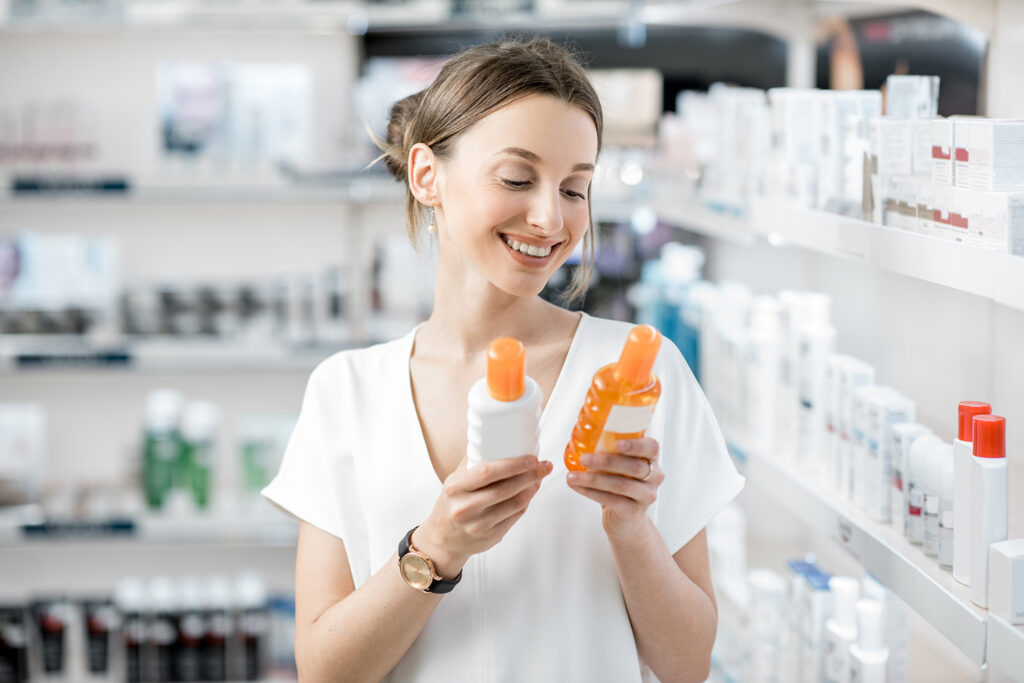When you go to the sunscreen aisle of your favorite retail store it can feel overwhelming. Not only are there dozens of brands, but there are things to consider like the SPF rating, whether the lotion is spray-on, gel, lotion, or some other consistency, and many other considerations to make.
If you feel unsure of your sunscreen purchase every time you walk to the cash register, then you’re not alone. The sheer number of choices can make your head spin. We thought we’d use our expertise in all things skin-related to give you 7 easy steps to choosing the right sunscreen.
Step 1: Check the SPF (Sun Protection Factor)
Look for sunscreen with a broad-spectrum SPF of 30 or higher. This indicates protection against both UVA and UVB rays.
Step 2: Consider your skin type
Take into account your skin type, whether it’s oily, dry, sensitive, or acne-prone. Choose a sunscreen that is suitable for your specific skin type to avoid potential irritation or breakouts.
Step 3: Look for broad-spectrum protection
Ensure the sunscreen provides broad-spectrum protection, which means it shields against both UVA and UVB rays. This protects your skin from sunburn, premature aging, and skin cancer.
Step 4: Choose the right formulation
Sunscreens come in different forms such as lotions, creams, gels, sprays, or sticks. Select a formulation that you find easy to apply and fits your lifestyle or specific needs (e.g., waterproof for swimming or sports).
Step 5: Consider any specific needs or preferences
If you have specific needs or preferences, such as fragrance-free, hypoallergenic, or mineral-based sunscreens, make sure to choose a product that aligns with your requirements.
Step 6: Check the expiration date
When choosing the right sunscreen, always check the expiration date on the sunscreen bottle or packaging. Expired sunscreen may be less effective, so it’s essential to use a product that is still within its shelf life.
Step 7: Read reviews and seek recommendations
Before purchasing, consider reading online reviews or seeking recommendations from dermatologists or trusted sources. Others’ experiences and insights can help you make an informed decision about the sunscreen that best suits your needs.
What Does Sunscreen Do, Anyway?
Sunscreen works by creating a protective barrier on the skin’s surface that absorbs or reflects harmful ultraviolet (UV) rays from the sun. It contains active ingredients that either absorb UV radiation and convert it into heat or reflect the rays away from the skin. The sun protection factor (SPF) indicates how long the sunscreen can protect you from sunburn compared to not wearing any sunscreen. Applying sunscreen generously and regularly helps to prevent sunburn, skin damage, and premature aging, and reduces the risk of skin cancer caused by excessive UV exposure.
There are several active ingredients commonly found in sunscreens that help protect the skin from harmful UV rays:
- Chemical Filters: These ingredients absorb UV radiation and convert it into heat. Common examples include avobenzone, octinoxate, octisalate, and oxybenzone.
- Physical Filters: These ingredients act as a physical barrier by reflecting and scattering UV rays away from the skin. Titanium dioxide and zinc oxide are commonly used physical filters.
- Broad-Spectrum Protection: Some sunscreens combine both chemical and physical filters to provide broad-spectrum protection, shielding against both UVA and UVB rays.
Do you have more questions about sunscreen? We’ll be happy to answer them. Reach out to us today to schedule an appointment.



Recent Comments